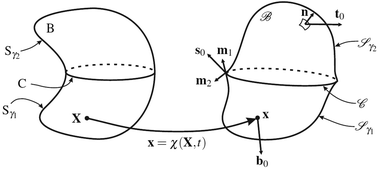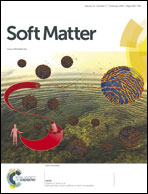Modeling of elasto-capillary phenomena†
Abstract
Surface energy is an important factor in the deformation of fluids but is typically a minimal or negligible effect in solids. However, when a solid is soft and its characteristic dimension is small, forces due to surface energy can become important and induce significant elastic deformation. The interplay between surface energy and elasticity can lead to interesting elasto-capillary phenomena. We present a finite-element-based numerical simulation capability for modeling these effects in a static, implicit framework. We demonstrate the capacity of the simulation capability by examining three elasto-capillary problems: (i) wetting of an elastic hemispherical droplet on a substrate, (ii) cavitation of an elastomer, and (iii) the Rayleigh–Plateau instability in soft elastic filaments.


 Please wait while we load your content...
Please wait while we load your content...